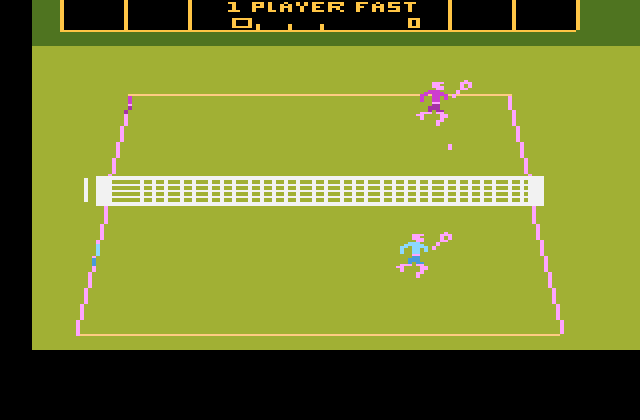
Whatever the perspective on video games, there's no gainsaying their popularity. Others have praised this development, crediting video games with making kids smarter and quicker. Some have lamented this fact, condemning video games for keeping kids inside or desensitizing children to violence. The Atari 2600, more than any other system, brought the video game into the home. In the long history of playthings, the Atari 2600's life was brief. The 2600's huge catalogue of games, however, kept it selling into the early 1990s, making it probably the longest-lasting video game console ever created. Sega and Nintendo introduced their own popular video game systems and displaced Atari's position as the preeminent video gaming system maker. Atari tried to maintain its market dominance with its 52 video game systems, but these consoles never succeeded as well as the original 2600. So many games flooded the market that there were inevitably poorly made ones that disappointed consumers. Computer technology was advancing so rapidly that the game's graphics and game play began to feel dated. Of course the Atari 2600's popularity could not last forever. "Have you played Atari today?" asked Atari commercials, and for millions of kids growing up in the 1970s and 1980s the answer was a resounding yes!

The result was that although other companies had game systems-Magnavox had the Odyssey, Mattel had the Intellivision, Coleco had the Colecovision-none could match the Atari's combination of affordable pricing, wealth of games, and clever marketing.
ATARI VIDEO TENNIS SOFTWARE
Independent software companies began producing their own games for Atari's system. Other popular games followed: Missile Command, Pac Man, Adventure, Asteroids, and Frogger. Atari licensed the arcade phenomenon Space Invader for the 2600 in 1980 and the game helped double Atari's sales to $415 million that year. Indeed, it was the games that sold the system. Friends loved facing each other in Combat, racing each other in Indy 500, and playing the many new games that Atari introduced in the following years. Yet despite the simple graphics, the games captivated players. Race cars looked like sticks with four pixel blobs for wheels. People looked like pixel blobs with legs.

Planes looked like pixel blobs with wings. By today's standards the graphics and game play were primitive. Unlike the older dedicated machines like Pong, users could change the game they were playing by inserting a new cartridge.

The Atari 2600-or the Atari Video Computer System (VCS) as it was initially marketed and sold-opened up worlds of game play for its owners and their friends when it was introduced in 1977. Players wanted more substance, and that's what the Atari 2600 delivered.

The Odyssey and Pong charmed players, but the games themselves had trouble sustaining their interest. That early system inspired Atari to create Pong, a video table-tennis game that ran first on a coin-operated game then in 1975 on a made-for-home system. The Atari 2600 was not the first home game system the Magnavox Odyssey preceded it in 1972. It took home-based video games to really launch the video game revolution. Even then, their fan base remained relatively small. Video games had been first programmed on university-based computers in the 1950s, but the general public couldn't play them until they began appearing as coin-operated games in the 1960s. Atari didn't invent video games, but the company's Atari 2600 made them a staple of daily play for millions of American families when it debuted in 1977.


 0 kommentar(er)
0 kommentar(er)
